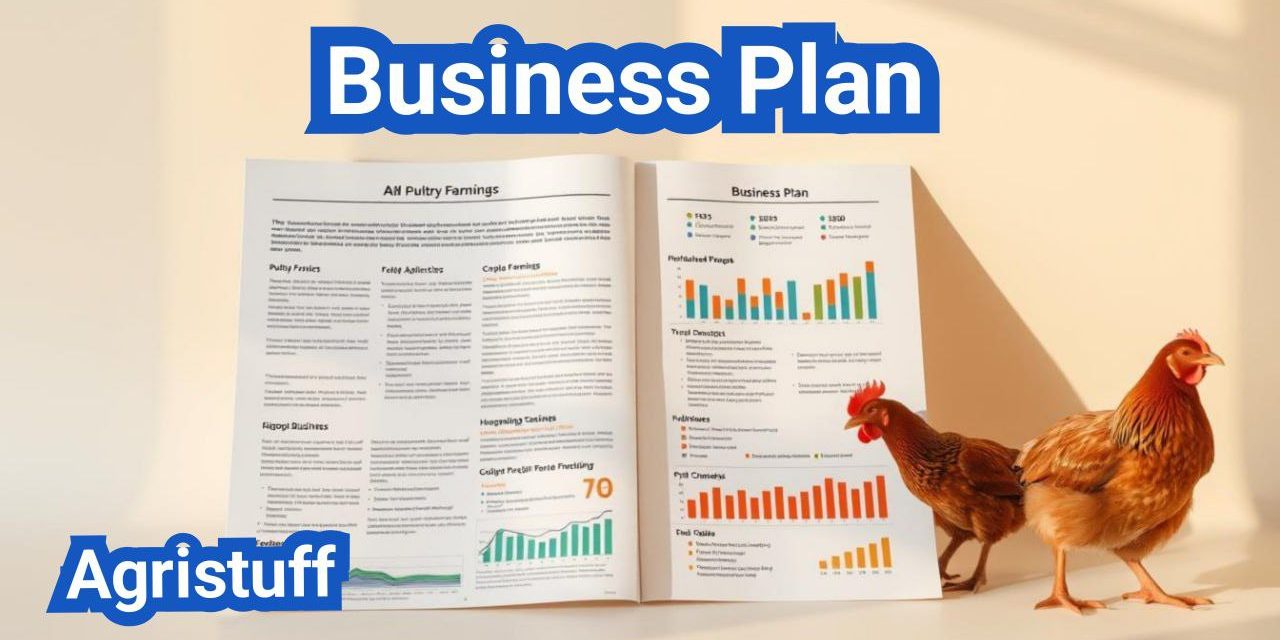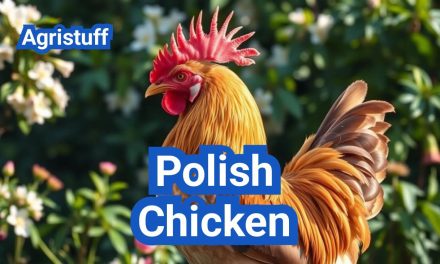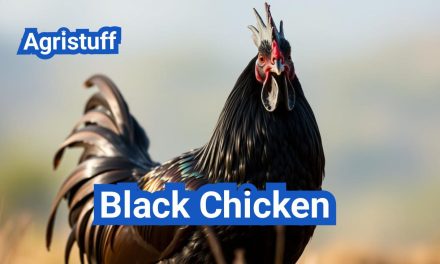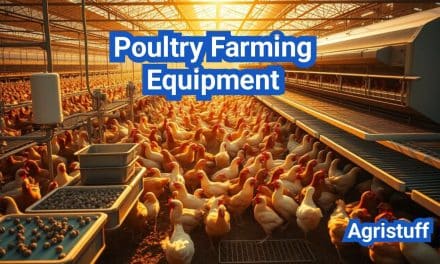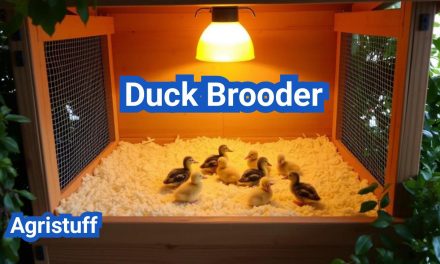Starting a successful poultry farming business in the USA requires careful planning and execution. A comprehensive poultry farming business plan is essential to ensure the venture’s profitability.
The initial investment for a small-scale operation can range from $5,000 to $30,000, while large-scale operations can cost up to $2 million or more. Understanding the costs and profits associated with poultry farming is crucial to making informed decisions.
A well-structured poultry farming business plan will help you navigate the challenges of the industry and achieve your goals. It is essential to consider factors such as market demand, competition, and regulatory requirements when developing your plan.
Key Takeaways
- Develop a comprehensive business plan to ensure profitability.
- Understand the costs associated with starting and running a poultry farm.
- Research market demand and competition to inform your business decisions.
- Consider regulatory requirements when developing your business plan.
- Plan for the long-term success of your poultry farming business.
Understanding the Poultry Farming Industry
With the US being one of the world’s largest producers of poultry meat and eggs, understanding the poultry farming industry is crucial for anyone looking to enter this market. The industry’s complexity is characterized by diverse market trends, various types of farming operations, and numerous challenges and opportunities.
Current Market Trends in the US Poultry Sector
The US poultry sector is experiencing significant shifts due to changing consumer preferences and advancements in technology. Some of the current market trends include:
- Increasing demand for organic and free-range poultry products
- Growth in the export market, particularly to countries like China
- Adoption of advanced technologies such as precision farming and automated processing systems
Types of Poultry Farming Operations
Poultry farming operations in the US can be broadly categorized into several types based on their production focus and scale:
- Broiler Farms: Specializing in raising chickens for meat production
- Layer Farms: Focusing on egg production
- Breeder Farms: Engaged in producing hatching eggs or chicks for other farms
- Backyard or Small-Scale Operations: Typically for personal consumption or local sales
Industry Challenges and Opportunities
The poultry farming industry faces several challenges, including disease management, environmental concerns, and regulatory compliance. However, these challenges also present opportunities for innovation and growth:
- Developing sustainable farming practices to reduce environmental impact
- Implementing biosecurity measures to mitigate disease risks
- Exploring new market opportunities, such as direct-to-consumer sales
Essential Components of a Poultry Farming Business Plan

A thorough business plan is the foundation upon which successful poultry farming businesses are built, outlining strategies for production, marketing, and financial management. This comprehensive document guides entrepreneurs through the complexities of the poultry industry, helping them make informed decisions and avoid potential pitfalls.
Executive Summary Development
The executive summary is a crucial component of the poultry farming business plan, providing an overview of the entire operation. It should concisely outline the farm’s mission, objectives, and unique selling proposition, capturing the reader’s attention and encouraging them to read further.
Business Description and Structure
The business description section provides detailed information about the poultry farming operation, including its legal structure, location, and facilities. This section should also outline the farm’s management team and their relevant experience in the industry.
Key elements to include in the business description:
- Legal structure (sole proprietorship, partnership, corporation)
- Location and site description
- Facilities and equipment
- Management team and their experience
Market Analysis and Strategy
A thorough market analysis is essential for understanding the poultry industry’s dynamics and identifying opportunities for growth. This section should examine market trends, consumer demand, and competitor activity, providing a basis for developing an effective marketing strategy.
Market analysis should cover:
- Industry trends and outlook
- Target market demographics and preferences
- Competitor analysis
- Market share projections
Operational Plan Creation
The operational plan outlines the day-to-day activities involved in running the poultry farming operation. It should cover aspects such as production processes, supply chain management, and biosecurity measures.
| Operational Plan Components | Description |
|---|---|
| Production Processes | Details on breeding, hatching, growing, and harvesting poultry |
| Supply Chain Management | Information on sourcing feed, equipment, and other inputs |
| Biosecurity Measures | Protocols for disease prevention and control |
By incorporating these essential components into their business plan, poultry farmers can create a comprehensive roadmap for their operation, enhancing their chances of success in the competitive poultry industry.
Initial Investment Requirements for Poultry Farming
The initial investment for starting a poultry farm can vary significantly based on the scale and type of operation. Understanding these costs is crucial for developing a comprehensive business plan and securing necessary funding.
Land and Infrastructure Costs
Land acquisition or leasing is a significant component of the initial investment. The cost of land varies widely depending on location, accessibility, and zoning regulations. Infrastructure costs include constructing or renovating poultry houses, installing fencing, and developing waste management systems.
Key considerations for land and infrastructure include:
- Proximity to markets and suppliers
- Availability of utilities such as water and electricity
- Zoning and land-use regulations
- Environmental impact assessments
Equipment and Technology Expenses
Poultry farming requires specialized equipment, including feeding and watering systems, ventilation systems, and egg collection equipment. The cost of this equipment can be substantial and is a major part of the initial investment.
Modern poultry farms often incorporate advanced technology to improve efficiency and animal welfare. This can include automated feeding systems, climate control, and health monitoring systems.
Initial Stock Purchase
The initial stock purchase involves acquiring the poultry birds, which can be either day-old chicks or pullets, depending on the type of operation. The cost of the initial stock varies based on breed, quality, and source.
Permits and Licensing Fees in the US
Poultry farming operations in the US must comply with various federal, state, and local regulations. This includes obtaining necessary permits and licenses, which can vary in cost depending on the location and size of the operation.
Typical permits and licenses required include:
- Business license
- Zoning permit
- Environmental permits
- Health department permits
Understanding and budgeting for these initial investment requirements is essential for the successful establishment of a poultry farming operation.
Broiler Farm Business Model

Understanding the broiler farm business model is essential for making informed decisions in poultry farming. A well-structured business model not only guides the operational aspects but also helps in strategizing for profitability.
Setup Requirements for Broiler Operations
Setting up a broiler farm requires careful planning and investment in the right infrastructure. Key setup requirements include acquiring suitable land, constructing broiler houses, and purchasing necessary equipment such as feeders, drinkers, and ventilation systems.
The quality of the infrastructure directly impacts the health and productivity of the broilers. Therefore, it’s crucial to invest in high-quality equipment and ensure that the broiler houses are designed to provide optimal conditions for the birds.
Production Cycle and Management
The production cycle in broiler farming typically ranges from 5 to 7 weeks, depending on the breed and production goals. Effective management during this cycle is critical and involves monitoring health, managing feed, and maintaining optimal environmental conditions.
Farmers must also implement biosecurity measures to prevent disease outbreaks, which can significantly impact production and profitability.
Cost Structure and Revenue Streams
The cost structure for a broiler farm includes initial setup costs, ongoing expenses such as feed, labor, and veterinary care, and other operational expenditures. Feed costs are typically the largest expense, making up a significant portion of the total costs.
Revenue is generated from the sale of broilers, either directly to consumers, wholesalers, or processors. Diversifying revenue streams, such as selling manure or offering value-added products, can enhance profitability.
Typical ROI Timeline
The return on investment (ROI) for a broiler farm can vary based on factors such as market prices, feed costs, and production efficiency. Generally, a well-managed broiler farm can achieve a positive ROI within the first two to three years of operation.
To maximize ROI, farmers should focus on optimizing production efficiency, reducing waste, and implementing cost-effective management practices.
Layer Farm Financial Projections
Financial projections for layer farms involve several key components that determine the farm’s economic viability. These projections are critical for farmers to understand the potential return on investment and to make informed decisions about their operations.
Setup Requirements for Layer Operations
Setting up a layer farm requires significant initial investment. The costs include purchasing land, constructing or renovating facilities, acquiring equipment, and buying initial stock of layer hens. The quality of the infrastructure directly impacts the health and productivity of the hens. For instance, a well-designed ventilation system and appropriate housing are crucial for maintaining a healthy environment.
Production Cycle and Management
The production cycle for layer hens typically begins at 18-20 weeks of age and continues until they are about 72-80 weeks old. Efficient management of the production cycle is vital to maximize egg production and minimize costs. This includes regular health checks, optimal feeding strategies, and maintaining a clean and safe environment for the hens.
Cost Structure and Revenue Streams
The main costs associated with layer farm operations include feed, labor, equipment, and veterinary care. Feed is typically the largest expense, accounting for a significant portion of the total costs. Revenue is primarily generated through the sale of eggs, with potential additional income from the sale of spent hens.
Typical ROI Timeline
The return on investment (ROI) for layer farms can vary based on several factors, including the size of the operation, market conditions, and management efficiency. Generally, layer farms can expect to achieve a positive ROI within 3-5 years of operation. However, this timeline can be influenced by factors such as fluctuations in egg prices and production costs.
By understanding these financial projections, layer farm operators can better plan and manage their businesses to achieve profitability and long-term success.
Pastured Poultry Budget and Operations

With the increasing demand for ethically sourced poultry products, pastured poultry farming has emerged as a viable and profitable business opportunity. This approach to poultry farming involves raising birds in free-range systems, which can lead to improved animal welfare and environmental sustainability.
Infrastructure for Free-Range Systems
Setting up a pastured poultry operation requires careful planning of the infrastructure to ensure the health and well-being of the birds. This includes designing mobile or fixed coops that can be moved regularly to provide fresh forage and reduce disease risk. The cost of infrastructure can vary widely depending on the size of the operation and the materials used.
Key components of free-range infrastructure include:
- Mobile coops or hen houses
- Fencing to protect birds from predators
- Feeders and waterers designed for outdoor access
- Portable electric fencing for rotational grazing
Organic Certification Considerations
For farmers considering organic certification, it’s essential to understand the requirements and benefits. Organic certification can provide access to premium markets and higher prices, but it also involves additional costs and management practices. The USDA National Organic Program (NOP) sets the standards for organic production in the United States.
“Organic production is not just about avoiding synthetic chemicals; it’s a holistic approach to farming that promotes ecological balance and conserves biodiversity.” – USDA National Organic Program
Premium Pricing Strategies
Pastured poultry products often command premium prices due to their perceived higher quality and more humane production methods. Farmers can adopt various pricing strategies, including direct-to-consumer sales through farmers’ markets or online platforms, to maximize their returns.
Effective pricing strategies include:
- Value-based pricing reflecting the quality and production methods
- Competitive pricing based on market rates for similar products
- Premium pricing for organic or specialty products
Environmental and Animal Welfare Benefits
Pastured poultry farming offers several environmental benefits, including improved soil health through rotational grazing and reduced reliance on antibiotics. Additionally, the practice promotes animal welfare by providing birds with access to fresh air, sunlight, and natural behaviors.
| Benefits | Description |
|---|---|
| Environmental Sustainability | Improved soil health and biodiversity |
| Animal Welfare | Access to fresh air, sunlight, and natural behaviors |
| Economic Benefits | Potential for premium pricing and direct-to-consumer sales |
Regulatory Compliance for US Poultry Farms

Regulatory compliance is a critical aspect of running a successful poultry farm in the United States. Poultry farms must adhere to various regulations to ensure animal health, environmental sustainability, and food safety.
USDA and FDA Requirements
The United States Department of Agriculture (USDA) and the Food and Drug Administration (FDA) play crucial roles in regulating the poultry industry. The USDA is responsible for ensuring the safety of the nation’s poultry supply, while the FDA oversees the safety of feed and drugs used in poultry production.
Poultry farms must comply with USDA regulations regarding animal health, including disease control measures and humane treatment standards. The FDA regulates the use of antibiotics and other medications in poultry production, ensuring that these substances are used safely and effectively.
| Regulatory Agency | Responsibility | Key Regulations |
|---|---|---|
| USDA | Animal Health and Poultry Supply Safety | Disease control, humane treatment standards |
| FDA | Safety of Feed and Drugs in Poultry Production | Antibiotic use, medication safety |
CAFO Permit Requirements
Concentrated Animal Feeding Operations (CAFOs) are subject to specific permit requirements under the Clean Water Act. These regulations aim to prevent water pollution by controlling the discharge of manure and other waste from large animal feeding operations.
Poultry farms classified as CAFOs must develop and implement a nutrient management plan, which outlines how they will manage manure and prevent water contamination.
Egg Safety Rule Compliance
The Egg Safety Rule, enforced by the FDA, requires egg producers to implement measures to prevent Salmonella contamination. This includes maintaining egg production environments that minimize the risk of Salmonella introduction.
Farmers must also register their farms with the FDA and comply with record-keeping requirements to demonstrate their adherence to the Egg Safety Rule.
NPIP Certification Process
The National Poultry Improvement Plan (NPIP) is a cooperative state-federal-industry program aimed at controlling and eradicating certain poultry diseases. Participating poultry farms can achieve NPIP certification by meeting specific health standards and following NPIP guidelines.
Certification involves regular testing and inspections to ensure compliance with NPIP requirements, enhancing the overall health of the poultry population.
By understanding and complying with these regulatory requirements, US poultry farms can ensure they operate within legal and safety standards, promoting a healthy and sustainable poultry industry.
Poultry Farming Business Plan Development Steps

To establish a thriving poultry farm, it’s essential to develop a detailed business plan that covers all aspects of the operation. A comprehensive business plan serves as a roadmap for your farm’s growth and profitability, helping you navigate the complexities of the poultry industry.
Step1: Conducting Market Research
Conducting thorough market research is the first step in developing a poultry farming business plan. This involves analyzing the demand for poultry products in your target market, identifying your competitors, and understanding the current market trends. Market research helps you determine the viability of your business idea and make informed decisions about your production and marketing strategies.
- Identify your target audience and their preferences
- Analyze the competition and their market share
- Understand the current market trends and forecasts
Step2: Defining Your Poultry Business Model
Defining your poultry business model is crucial to the success of your farm. This involves deciding on the type of poultry operation you want to establish, such as broiler or layer farming, and determining the scale of your operation. Your business model should be based on your market research, financial resources, and production capabilities.
- Determine the type of poultry operation (broiler, layer, or breeder)
- Decide on the scale of your operation (small-scale, commercial, or industrial)
- Develop a production plan that aligns with your business model
Step3: Creating Financial Projections
Creating financial projections is a critical component of your poultry farming business plan. This involves estimating your revenue, expenses, and profits over a specific period. Financial projections help you determine the financial viability of your business and make informed decisions about investments and funding.
| Category | Year 1 | Year 2 | Year 3 |
|---|---|---|---|
| Revenue | $100,000 | $120,000 | $150,000 |
| Expenses | $80,000 | $90,000 | $100,000 |
| Profit | $20,000 | $30,000 | $50,000 |
Step4: Developing Risk Management Strategies
Developing risk management strategies is essential to mitigate potential risks and challenges in poultry farming. This involves identifying potential risks, assessing their impact, and developing strategies to mitigate them. Risk management helps you minimize losses and ensure the long-term sustainability of your farm.
- Identify potential risks (disease outbreaks, market fluctuations, etc.)
- Assess the impact of each risk on your business
- Develop strategies to mitigate each risk (vaccination programs, diversification, etc.)
Poultry Farm Design and Ventilation Requirements

Effective poultry farm design is crucial for maintaining bird health and optimizing productivity. A well-designed farm ensures a healthy environment for the birds, which in turn enhances their growth and productivity.
Housing Systems and Space Requirements | Poultry Farming Business Plan
The design of housing systems is a critical aspect of poultry farming. It involves determining the appropriate space requirements for the birds. Overcrowding can lead to stress and disease among the birds, while too much space can be inefficient. The ideal space allocation depends on the type of poultry being raised.
Key considerations for housing systems include:
- Sufficient ventilation to maintain air quality
- Adequate lighting to promote bird health and productivity
- Comfortable temperature ranges for the birds
- Space for feeding and watering systems
Ventilation System Design | Poultry Farming Business Plan
A well-designed ventilation system is essential for removing moisture, reducing ammonia levels, and maintaining a comfortable temperature within the poultry house. The ventilation rate must be adjustable to accommodate different weather conditions and the age of the birds.
Factors to consider in ventilation system design:
- Fan capacity and layout
- Air inlet and outlet configurations
- Control systems for automated ventilation adjustment
Climate Control Implementation | Poultry Farming Business Plan
Climate control is vital for maintaining optimal conditions within the poultry house. This involves not only temperature control but also managing humidity levels and air quality.
| Climate Control Measure | Description | Benefits |
|---|---|---|
| Heating Systems | Used to maintain optimal temperatures during cold weather | Prevents cold stress, promotes growth |
| Cooling Systems | Utilized to reduce temperatures during hot weather | Reduces heat stress, improves bird comfort |
| Humidification/Dehumidification | Systems to control humidity levels | Maintains optimal humidity, reduces respiratory issues |
Feeding and Watering Systems Installation | Poultry Farming Business Plan
Efficient feeding and watering systems are crucial for the health and productivity of the birds. These systems must be designed to minimize waste and ensure that all birds have access to feed and water.
By focusing on these key aspects of poultry farm design, farmers can create an environment that promotes bird health, enhances productivity, and contributes to the overall success of the farming operation.
Poultry Biosecurity Plan Checklist

Developing a poultry biosecurity plan is essential for minimizing the risk of disease transmission and ensuring the overall health of the flock. A comprehensive biosecurity plan helps protect the farm from disease outbreaks, reducing the risk of financial losses and promoting a safe and healthy environment for the birds.
Establishing Access Controls | Poultry Farming Business Plan
Access controls are a critical component of a poultry biosecurity plan. Limiting access to the farm and controlling who enters the premises can significantly reduce the risk of disease transmission. Some key measures include:
- Implementing a sign-in/sign-out log for all visitors and employees
- Restricting access to authorized personnel only
- Providing personal protective equipment (PPE) such as gloves, masks, and coveralls for visitors and employees
- Establishing a designated parking area for visitors to prevent contamination of farm vehicles
Implementing Sanitation Protocols | Poultry Farming Business Plan
Sanitation protocols are vital for maintaining a clean and disease-free environment on the poultry farm. Effective sanitation measures include:
- Regular cleaning and disinfection of farm equipment, vehicles, and facilities
- Implementing a footbath program for all individuals entering the farm
- Providing handwashing stations with soap and water for employees and visitors
- Ensuring proper disposal of manure and other waste materials
Developing Disease Prevention Strategies | Poultry Farming Business Plan
Disease prevention is a crucial aspect of a poultry biosecurity plan. Strategies for preventing disease include:
- Implementing a vaccination program tailored to the specific needs of the farm
- Conducting regular health checks on the flock to identify potential issues early
- Maintaining a closed flock policy to prevent the introduction of new birds that may carry diseases
- Monitoring for signs of disease and having a plan in place for responding to outbreaks
Creating Vaccination Programs | Poultry Farming Business Plan
Vaccination programs are an essential component of a comprehensive poultry biosecurity plan. When developing a vaccination program, consider the following:
- Consulting with a veterinarian to determine the most effective vaccination strategy for the farm
- Selecting vaccines that are appropriate for the specific diseases present in the region
- Ensuring proper administration of vaccines to maximize their effectiveness
- Maintaining accurate records of vaccinations to track the health of the flock
Direct-to-Consumer Egg Sales Strategy

By adopting a direct-to-consumer approach, egg producers can enjoy higher profit margins and build a loyal customer base. This strategy allows farmers to connect directly with consumers, understand their preferences, and tailor their products accordingly.
Building Your Customer Base | Poultry Farming Business Plan
Establishing a strong customer base is crucial for the success of direct-to-consumer egg sales. Farmers can achieve this by participating in local farmers’ markets, creating a robust online presence through social media and websites, and offering referral incentives to existing customers.
“Word of mouth is a powerful marketing tool,” as noted by a successful egg farmer, “when customers trust your brand, they’re more likely to recommend it to others.” Building trust through transparency about farming practices and product quality can significantly enhance customer loyalty.
Packaging and Branding | Poultry Farming Business Plan
Effective packaging and branding are essential for differentiating your eggs in a competitive market. Consider using eco-friendly packaging that appeals to environmentally conscious consumers. Develop a brand identity that reflects the quality and uniqueness of your eggs, including a compelling brand story and visually appealing labels.
Distribution Channels | Poultry Farming Business Plan
Identifying the right distribution channels is vital for reaching your target customers efficiently. Options include selling directly at farmers’ markets, through community-supported agriculture (CSA) programs, or via online platforms that facilitate direct-to-consumer sales.
- Farmers’ markets provide face-to-face interaction with customers.
- CSA programs offer a subscription-based model that can ensure regular sales.
- Online platforms can expand your reach beyond local boundaries.
Pricing Strategies | Poultry Farming Business Plan
Developing an effective pricing strategy is critical for the profitability of your direct-to-consumer egg sales. Consider the costs of production, packaging, and distribution when setting prices. You may also want to explore premium pricing for specialty eggs, such as organic or pasture-raised eggs, which command higher prices due to their perceived health and environmental benefits.
As the demand for locally sourced and sustainably produced eggs continues to grow, adopting a well-thought-out direct-to-consumer egg sales strategy can be a game-changer for your poultry farming business.
Case Study: Small-Scale vs. Commercial Poultry Operations

Comparing small-scale and commercial poultry operations reveals distinct business models and challenges within the industry. The scale of operation significantly influences the business strategy, cost structure, and profitability of poultry farming.
2,400 Layer Farm Business Model Analysis | Poultry Farming Business Plan
A commercial layer farm with 2,400 hens represents a moderate scale of operation. The business model for such a farm involves significant initial investment in infrastructure, including housing, feeding systems, and egg collection equipment.
Key Components of the Business Model:
- Initial investment in infrastructure and equipment
- Ongoing costs for feed, labor, and veterinary care
- Revenue generated from egg sales
The cost structure for a 2,400 layer farm includes initial setup costs and ongoing expenses. A detailed breakdown is essential for understanding the financial dynamics of such an operation.
Small Backyard Poultry Operation Breakdown | Poultry Farming Business Plan
In contrast, small backyard poultry operations are characterized by lower initial investments and operational costs. These operations often focus on direct-to-consumer sales or personal egg production.
Key Features of Small Backyard Operations:
- Lower initial investment
- Flexibility in production scale
- Potential for premium pricing through direct-to-consumer sales
Comparative Analysis of Costs and Returns | Poultry Farming Business Plan
A comparative analysis of small-scale and commercial poultry operations highlights the differences in cost structures and revenue streams. The following table summarizes key financial indicators for both types of operations.
| Indicator | Small Backyard Operation | 2,400 Layer Farm |
|---|---|---|
| Initial Investment | $1,000 – $5,000 | $50,000 – $100,000 |
| Annual Revenue | $2,000 – $10,000 | $50,000 – $150,000 |
| Profit Margin | 20% – 50% | 15% – 30% |
The table illustrates the significant differences in initial investment, annual revenue, and profit margins between small backyard and commercial poultry operations.
Scaling Considerations and Growth Strategies | Poultry Farming Business Plan
When considering scaling up a poultry operation, several factors come into play, including market demand, available capital, and operational capacity. Effective growth strategies involve optimizing production efficiency and exploring new market opportunities.
Growth Strategies for Poultry Operations:
- Investing in technology to improve efficiency
- Expanding product offerings to include value-added products
- Developing strategic partnerships with suppliers or distributors
At The End of: Poultry Farming Business Plan
Developing a comprehensive poultry farming business plan is crucial for success in the industry. As discussed, the cost of starting a poultry farm can vary significantly depending on factors such as the scale of operation, type of poultry, and infrastructure requirements.
A well-structured business plan helps farmers navigate the complexities of the poultry farming industry, including regulatory compliance, market fluctuations, and disease management. By understanding the costs involved and potential profit margins, farmers can make informed decisions about their operations.
Whether you’re planning to start a small backyard flock or a large commercial operation, a thorough poultry business plan will help you achieve your goals. It will guide you in managing costs, optimizing production, and maximizing profit.
By following the guidelines outlined in this article, you can create a robust business plan that sets your poultry farming venture up for success.
FAQ
What is a poultry farming business plan?
A poultry farming business plan is a comprehensive document that outlines the goals, objectives, and strategies for a poultry farming operation, including production, marketing, and financial projections.
How do I start a poultry farming business?
To start a poultry farming business, you need to develop a business plan, secure funding, obtain necessary permits and licenses, and establish a suitable farm infrastructure, including housing and equipment for your birds.
What are the initial investment requirements for poultry farming?
The initial investment requirements for poultry farming include land and infrastructure costs, equipment expenses, initial stock purchase, and permits and licensing fees, which can vary depending on the size and type of operation.
What are the key components of a poultry farming business plan?
The key components of a poultry farming business plan include an executive summary, business description and structure, market analysis and strategy, operational plan, financial projections, and risk management strategies.
How do I develop a poultry biosecurity plan?
To develop a poultry biosecurity plan, you need to establish access controls, implement sanitation protocols, develop disease prevention strategies, and create vaccination programs to minimize the risk of disease outbreaks.
What are the regulatory compliance requirements for US poultry farms?
US poultry farms must comply with USDA and FDA requirements, obtain CAFO permits, adhere to egg safety rules, and consider NPIP certification to ensure regulatory compliance.
How do I design a poultry farm?
To design a poultry farm, you need to consider housing systems and space requirements, ventilation system design, climate control implementation, and feeding and watering systems installation to ensure a healthy and productive environment for your birds.
What are the benefits of pastured poultry farming?
Pastured poultry farming offers several benefits, including improved animal welfare, environmental benefits, and premium pricing strategies, as well as organic certification considerations.
How do I develop a direct-to-consumer egg sales strategy?
To develop a direct-to-consumer egg sales strategy, you need to build your customer base, create effective packaging and branding, establish distribution channels, and implement pricing strategies to reach your target market.
What are the differences between small-scale and commercial poultry operations?
Small-scale poultry operations typically have lower startup costs and may focus on niche markets, while commercial poultry operations are larger and more complex, with higher production volumes and more extensive marketing efforts.
Conclusion of: Poultry Farming Business Plan
Introduction: Why a Poultry Farming Business Plan matters now
A well-researched Poultry Farming Business Plan is the difference between guessing and growing. It helps you define your market, choose the right production model (eggs, broilers, or both), forecast cash flow, and map risks before money is on the line. In the U.S., poultry is a cornerstone of the food economy, so setting clear goals and assumptions up front keeps your farm competitive and compliant from day one. USDA ERS Poultry & Eggs overview
Start with structure: the core sections of a Poultry Farming Business Plan
Your Poultry Farming Business Plan should follow a lender-ready structure: executive summary, company description, market analysis, organization and staffing, product and pricing, marketing and sales, operations, risk management, and 3–5-year financial projections. Don’t reinvent the wheel—use a template that matches U.S. lending standards so your plan is easy to review and fund. SBA guide: Write your business plan
U.S. demand snapshot to anchor your Poultry Farming Business Plan
A Poultry Farming Business Plan should cite credible demand data. National outlooks track consumption, production, and price trends for broilers and eggs—vital for setting realistic volume and revenue assumptions and for stress-testing worst-case scenarios. Monthly updates also flag feed price movements and disease risks that can affect margins. USDA ERS Livestock, Dairy & Poultry Outlook
Choose your model: layers, broilers, pasture-based—or a mix
Your Poultry Farming Business Plan should explain why you’re focusing on table eggs, meat birds, or a diversified mix. Small-scale egg enterprises pair steady weekly sales with strong community demand, while pastured or premium broilers command higher per-bird prices with seasonal cash surges. Align breed choice, housing, and processing with the model you pick. Penn State Extension: Small-Scale Egg Production
Regulatory basics to embed in your Poultry Farming Business Plan
Every Poultry Farming Business Plan needs a compliance section. For egg producers with 3,000+ layers, the FDA Egg Safety Rule (21 CFR Part 118) mandates Salmonella Enteritidis prevention and recordkeeping; even smaller farms benefit from adopting its biosecurity and refrigeration practices. Summarize what applies to your flock size and sales channels. eCFR: 21 CFR Part 118
Labeling & food safety statements for eggs
Your Poultry Farming Business Plan should also cover egg labeling. FDA requires a safe-handling statement on retail cartons for untreated shell eggs to reduce foodborne illness risk. If you place the statement inside the lid, “Keep Refrigerated” must appear on the exterior panel. Bake these details into your packaging budget and SOPs. eCFR: 21 CFR 101.17 (Safe Handling)
Processing pathways & exemptions for small producers
A practical Poultry Farming Business Plan explains how you’ll process birds. Under the Poultry Products Inspection Act, certain small-scale exemptions allow limited slaughter/processing without continuous federal inspection, subject to strict conditions on volume, sanitation, and sales scope. Plan where you’ll process and where product can legally be sold. FSIS: Poultry Exemptions Guidance
Biosecurity: the profit protector in your Poultry Farming Business Plan
Disease prevention belongs in every Poultry Farming Business Plan. Limiting visitors, sanitizing equipment, controlling rodents and wild birds, and separating age groups are low-cost, high-impact steps that keep mortality and medication costs down—and protect your reputation. Document your daily and seasonal protocols. USDA APHIS: Defend the Flock
NPIP participation: signal quality in your Poultry Farming Business Plan
Citing NPIP participation in your Poultry Farming Business Plan reassures customers and wholesale buyers that your chicks come from disease-monitored flocks. Many graders and export programs require it, and hatchery sourcing is easier when you use NPIP-listed suppliers. Budget for paperwork and testing as part of startup costs. USDA APHIS: National Poultry Improvement Program
Housing, ventilation, and seasonal comfort
Design and climate control choices in your Poultry Farming Business Plan should reflect your location. Proper air exchange, litter management, and shade reduce heat stress, boost feed conversion, and protect foot health—directly affecting cost per dozen or cost per pound. Put routine checks and maintenance on the calendar. UGA Poultry Housing Tips
Environmental compliance & manure management
Your Poultry Farming Business Plan must show how you’ll store, handle, and land-apply litter to protect water quality. Even if you’re far below CAFO thresholds, adopting nutrient-management practices, setbacks, and runoff controls prevents fines and community friction—important for long-term site security. EPA: Animal Feeding Operations (AFOs)
Know the thresholds: CAFO definitions & permits
For a scalable Poultry Farming Business Plan, map future headcounts against federal definitions. Large CAFO thresholds (e.g., chickens with/without liquid manure handling) trigger permits and additional requirements; medium facilities may also qualify based on discharge. Planning ahead avoids costly retrofits. eCFR: 40 CFR 122.23 (CAFO)
Marketing channels & customer acquisition
Your Poultry Farming Business Plan should identify outlets—CSA boxes, grocers, restaurants, and especially farmers markets—plus the certifications and handling practices each requires. Markets offer steady foot traffic and repeat buyers when you show up consistently with clean branding and reliable supply. USDA AMS: Farmers Market Directory
Pricing that covers all costs (and pays you)
A profitable Poultry Farming Business Plan calculates price from the bottom up: chicks/pullets, feed, bedding, utilities, processing, packaging, market fees, labor, overhead—and your profit margin. Update costs quarterly and adjust prices before they erode cash flow. Penn State Extension: Pricing Your Poultry
Budget templates for broilers & pastured systems
Make your Poultry Farming Business Plan concrete with enterprise budgets. Pastured broiler models show how growth rate, stocking density, feed conversion, and on-farm processing affect the break-even price per bird. Customize inputs to local feed and labor. Univ. of Idaho PNW 665: Pastured Broiler Break-Even
Feed is king: plan for volatility
Because feed dominates expenses, your Poultry Farming Business Plan should include a sensitivity table for corn/soy price swings. Locking in contracts, optimizing rations, and preventing waste can shave cents per pound that become thousands per year. ERS Chart: Feed share of livestock costs
Labor, ergonomics, and safety
The best Poultry Farming Business Plan treats labor as an asset: cross-train for chores, rotate tasks to reduce strain, and standardize PPE and sanitation. Clear SOPs for handling crates, knives, scalders, and chillers reduce injuries and downtime while improving throughput. OSHA: Poultry Processing Safety
Funding options to launch your Poultry Farming Business Plan
If you’ll borrow, your Poultry Farming Business Plan should match lender criteria. SBA-backed 7(a) loans help with equipment, working capital, and real estate, offering partial federal guarantees that make banks more willing to lend to first-time operators. Prepare collateral, tax returns, and projections. SBA 7(a): Terms & Eligibility
Risk management and revenue insurance
Build resilience into your Poultry Farming Business Plan with insurance that protects gross revenue when markets or disasters hit. Whole-Farm Revenue Protection (WFRP) covers diversified farm revenue under one policy—useful if you sell eggs, meat, and value-added products. USDA RMA: Whole-Farm Revenue Protection
Organic & animal-care standards to differentiate your brand
If premium markets are part of your Poultry Farming Business Plan, account for organic certification and animal-care upgrades. The USDA’s Organic Livestock and Poultry Standards (OLPS) tighten space, outdoor access, and living-conditions requirements—add time and cost for compliance and audits. USDA AMS: OLPS Fact Sheet
Financial projections that lenders actually trust
Your Poultry Farming Business Plan needs monthly cash-flow, P&L, and balance-sheet forecasts with assumptions tied to flock size, mortality, lay rate/ADG, feed costs, processing, and price. Use a standard, auditable workbook so investors can trace your math. SCORE: Financial Projections Template
Roadmap & milestones for execution
Translate your Poultry Farming Business Plan into a timeline: site prep, housing, equipment lead times, brooder setup, chick arrival, first egg/meat sales, and break-even date. Add contingency buffers for permitting, supply chain delays, and disease control. SBA: Plan Your Business (tools)
Building wholesale and institutional sales
As your Poultry Farming Business Plan scales, wholesale accounts stabilize cash flow—restaurants, grocers, schools, and hospitals want consistent supply and documentation. Learn local procurement rules, then pilot with a small set of items (e.g., medium eggs or 3.5–4.5 lb whole birds). USDA Farmers.gov: Sell Your Products
Grading, shields, and the value of consistency
If shell-egg grading fits your Poultry Farming Business Plan, voluntary USDA grading can boost buyer confidence and open larger accounts. It involves standards, plant practices, and audits; assess the ROI against your volumes and channel mix. USDA AMS: Shell Egg Grades & Standards
Final thought
A strong Poultry Farming Business Plan is practical, numbers-first, and compliance-aware. Build it with authoritative data, right-sized infrastructure, and disciplined operating procedures. Then revisit it quarterly to adjust prices, feed strategies, and sales channels before issues become losses—turning a good plan into a durable farm business. USDA ERS: Industry fundamentals
Sources & References
- USDA ERS — Poultry & Eggs sector at a glance
- USDA ERS — Livestock, Dairy & Poultry Outlook
- eCFR — 21 CFR Part 118 (Egg Safety Rule)
- eCFR — 21 CFR 101.17 (Safe Handling Statements)
- FSIS — Poultry Exemptions Guidance
- USDA APHIS — Defend the Flock
- UGA — Poultry Housing Tips
- EPA — Animal Feeding Operations (AFOs)
- eCFR — 40 CFR 122.23 (CAFO)
- USDA AMS — Farmers Market Directory
- Penn State Extension — Pricing Your Poultry
- OSHA — Poultry Processing Safety
- SBA — 7(a) Loan Terms & Eligibility
- USDA RMA — Whole-Farm Revenue Protection
- USDA AMS — Organic Livestock & Poultry Standards (OLPS) Fact Sheet
- SCORE — Financial Projections Template
- SBA — Plan Your Business
- USDA AMS — Shell Egg Grades & Standards

